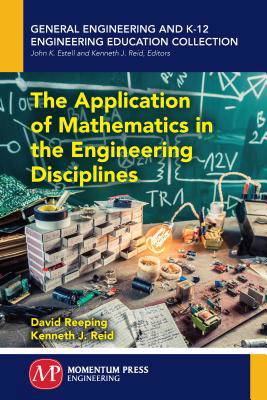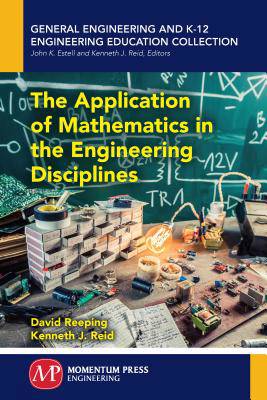
Door een staking bij bpost kan je online bestelling op dit moment iets langer onderweg zijn dan voorzien. Dringend iets nodig? Onze winkels ontvangen jou met open armen!
- Afhalen na 1 uur in een winkel met voorraad
- Gratis thuislevering in België vanaf € 30
- Ruim aanbod met 7 miljoen producten
Door een staking bij bpost kan je online bestelling op dit moment iets langer onderweg zijn dan voorzien. Dringend iets nodig? Onze winkels ontvangen jou met open armen!
- Afhalen na 1 uur in een winkel met voorraad
- Gratis thuislevering in België vanaf € 30
- Ruim aanbod met 7 miljoen producten
Zoeken
€ 45,95
+ 91 punten
Omschrijving
This text serves as the companion text to Introductory Engineering Mathematics, which introduces common mathematical concepts we see in engineering, including trigonometry, calculus, and functions. This text assumes a level of mathematics of a high school senior, plus some elements from the introductory text. Additional concepts we see in engineering are also introduced: specifically, matrices, differential equations, and some introduction to series. The concepts are introduced by examples rather than strict mathematical derivation. As a result, this text likely will not be an effective substitute for a differential equations course, but by illustrating the implementation of differential equations, it can be a companion to such a course. We primarily use historical events as examples (including failures) to illustrate the use of mathematics in engineering and the intersection of the disciplines. We hope you develop an appreciation for how to apply these concepts, and find a new lens through which to view engineering successes (and failures).
Specificaties
Betrokkenen
- Auteur(s):
- Uitgeverij:
Inhoud
- Aantal bladzijden:
- 150
- Taal:
- Engels
- Reeks:
Eigenschappen
- Productcode (EAN):
- 9781606509074
- Verschijningsdatum:
- 19/06/2018
- Uitvoering:
- Paperback
- Formaat:
- Trade paperback (VS)
- Afmetingen:
- 152 mm x 229 mm
- Gewicht:
- 213 g

Alleen bij Standaard Boekhandel
+ 91 punten op je klantenkaart van Standaard Boekhandel
Beoordelingen
We publiceren alleen reviews die voldoen aan de voorwaarden voor reviews. Bekijk onze voorwaarden voor reviews.











